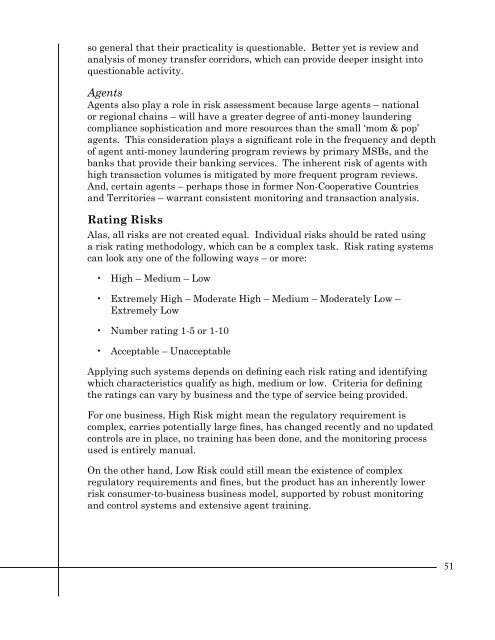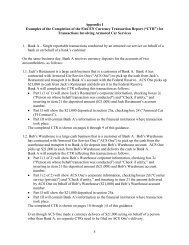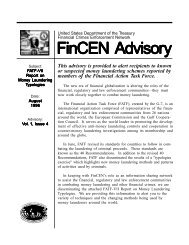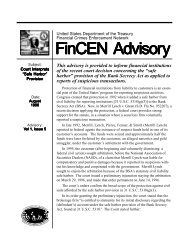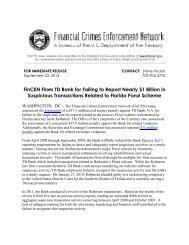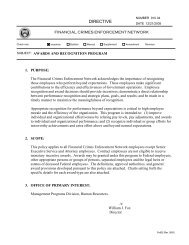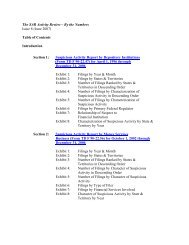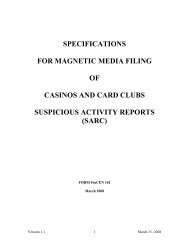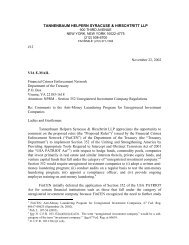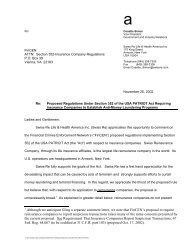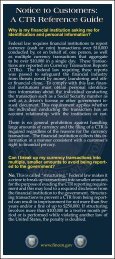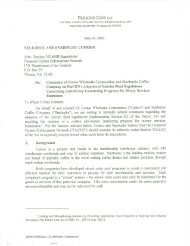FinCEN SAR Activity Review, Trends, Tips & Issues, Issue 10
FinCEN SAR Activity Review, Trends, Tips & Issues, Issue 10
FinCEN SAR Activity Review, Trends, Tips & Issues, Issue 10
You also want an ePaper? Increase the reach of your titles
YUMPU automatically turns print PDFs into web optimized ePapers that Google loves.
so general that their practicality is questionable. Better yet is review and<br />
analysis of money transfer corridors, which can provide deeper insight into<br />
questionable activity.<br />
Agents<br />
Agents also play a role in risk assessment because large agents – national<br />
or regional chains – will have a greater degree of anti-money laundering<br />
compliance sophistication and more resources than the small ‘mom & pop’<br />
agents. This consideration plays a significant role in the frequency and depth<br />
of agent anti-money laundering program reviews by primary MSBs, and the<br />
banks that provide their banking services. The inherent risk of agents with<br />
high transaction volumes is mitigated by more frequent program reviews.<br />
And, certain agents – perhaps those in former Non-Cooperative Countries<br />
and Territories – warrant consistent monitoring and transaction analysis.<br />
Rating Risks<br />
Alas, all risks are not created equal. Individual risks should be rated using<br />
a risk rating methodology, which can be a complex task. Risk rating systems<br />
can look any one of the following ways – or more:<br />
• High – Medium – Low<br />
• Extremely High – Moderate High – Medium – Moderately Low –<br />
Extremely Low<br />
• Number rating 1-5 or 1-<strong>10</strong><br />
• Acceptable – Unacceptable<br />
Applying such systems depends on defining each risk rating and identifying<br />
which characteristics qualify as high, medium or low. Criteria for defining<br />
the ratings can vary by business and the type of service being provided.<br />
For one business, High Risk might mean the regulatory requirement is<br />
complex, carries potentially large fines, has changed recently and no updated<br />
controls are in place, no training has been done, and the monitoring process<br />
used is entirely manual.<br />
On the other hand, Low Risk could still mean the existence of complex<br />
regulatory requirements and fines, but the product has an inherently lower<br />
risk consumer-to-business business model, supported by robust monitoring<br />
and control systems and extensive agent training.<br />
51


